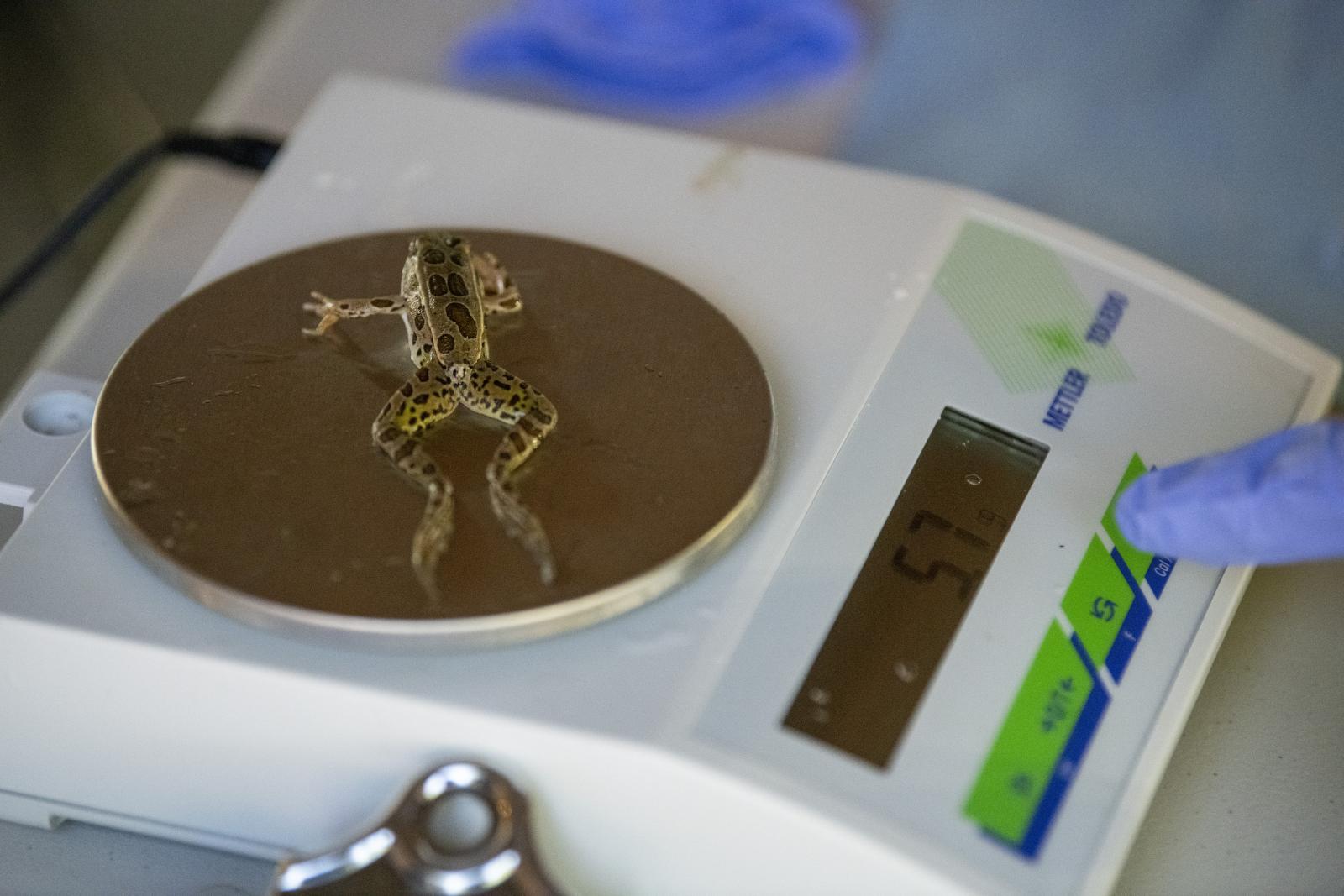Photos
Click to display full size or right-click to save to your device.
ARCHIVED NEWS RELEASE
This document is provided for archival purposes only. Archived documents
do not reflect current WDFW regulations or policy and may contain factual
inaccuracies.
News release Aug. 10, 2021
Emily Grabowsky, WDFW, (509) 699-9859
Tessa LaVergne, Northwest Trek Wildlife Park, (253) 686-6927
Hova Najarian, Oregon Zoo, (503) 220-5714
Sam Montgomery, WDFW, (360) 688-0721
Joanna Steward, WSU, (509) 335-3933
OTHELLO, Wash.– Hundreds of endangered northern leopard frogs leapt back into the wild at the Columbia National Wildlife Refuge in Grant County last week.
The releases were made possible by a partnership of the Washington Department of Fish and Wildlife (WDFW), U.S. Fish and Wildlife Service (USFWS), Oregon Zoo, Washington State University (WSU), and Northwest Trek Wildlife Park.
WDFW collected northern leopard frog eggs earlier this spring, and after months of growing at the Oregon Zoo and Northwest Trek Wildlife Park, the frogs were ready for release.
Once abundant throughout North America, northern leopard frogs are rapidly disappearing from their native ranges in Washington, Oregon, and western Canada.
The species has been listed as endangered in Washington since 1999, and with only one known population remaining in the wild in the state, there is still a long path to recovery for the frogs.
Likely causes of the frogs’ decline in the Pacific Northwest include a combination of threats from habitat loss and degradation, disease, non-native species, and climate change.
“The Washington state population of northern leopard frogs has a unique genetic variation relative to the rest of the species range, and they are part of the natural diversity of amphibians of the region," said Erica Crespi, WSU associate professor of biology. "We are working to keep them here!”
By raising eggs through tadpole stage to froglets at the Oregon Zoo and Northwest Trek Wildlife Park, the partners are working to bypass these threats through critical growth stages and grow the population of northern leopard frogs in the region.
“Giving these frogs a headstart by raising them free of predators gives their whole population a better chance of survival,” said Northwest Trek Zoological Curator Marc Heinzman. “We’re very pleased to participate in this critical effort to save an endangered species here in Washington.”
“We’re at a critical point for this species,” said Shelly Pettit, who oversees the Oregon Zoo’s frog-rearing efforts. “We’re doing everything we can to help northern leopard frogs thrive again in the Pacific Northwest — and a big, healthy froglet has a much better chance of surviving in the wild than an egg or a tadpole. After missing the 2020 season due to COVID impacts, we were very excited to produce a healthy group of frogs for this year’s release.”
Frogs are often overlooked for their significant contribution to the environment, a fact the agencies and their partners are working to change.
“Northern leopard frogs are an important indicator of water quality, they are both predator and prey, and frogs are often children's first experience with wildlife," said Emily Grabowsky, WDFW biologist. “If we can improve and conserve wetland habitat that is good for frogs, we will also benefit other species ranging from other amphibians to waterfowl and deer.”
Funding for the northern leopard frog reintroduction is being provided through a competitive state wildlife grant awarded to WDFW from USFWS’s Wildlife and Sport Fish Restoration program.
WDFW works to preserve, protect and perpetuate fish, wildlife and ecosystems while providing sustainable fish and wildlife recreational and commercial opportunities.
